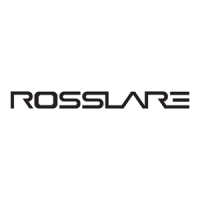Reader Functionality
28 AYC-E/Q/T60 Family Installation and Programming Manual
(EP) FFFF FFFF AAAA AAAA AAAA AAAA (OP)
Where:
EP = Even parity for first 12 bits
OP = Odd parity for last 12 bits
F = 8-Bit Facility code
A = 16-Bit code generated from keyboard
5.2.4.6 Option 6: 6 Keys BCD and Parity Bits, Wiegand 26-Bit
This option sends buffer of 6 keys, adds parity, and sends a 26-bit
BCD message. Each key is a four bit equivalent of the decimal
number.
The keypad PIN code must be 6 key presses in length. On the sixth key
press of the 6-digit PIN code, the data is sent across the Wiegand
Data lines as a BCD message.
If the entry of the 6-digit keypad PIN code is disrupted and a number
key or # is not pressed within 5 seconds, the keypad clears the PIN
code entry buffer, generates a medium length beep, and is ready to
receive a new 6-digit keypad PIN code:
(EP) AAAA BBBB CCCC DDDD EEEE FFFF (OP)
Where:
EP = Even parity for first 12 bits
OP = Odd parity for last 12 bits
A = The first key entered D = Fourth key entered
B = Second key entered E = Fifth key entered
C = Third key entered F = Sixth key entered
5.2.4.7 Option 7: Single Key, 3x4 Matrix Keypad (MD-P64)
This unique mode is intended to let the host controller scan the AYC-
E/Q/T60 keypad while still keeping the proximity card readers
Wiegand 26-Bit or Clock & Data formats active.
An optional interface board must be used between the AYC-E/Q/T60
and the host system. Each key press is immediately sent on DATA0 as
an ASCII character at a baud rate of 9600 bits per second.

